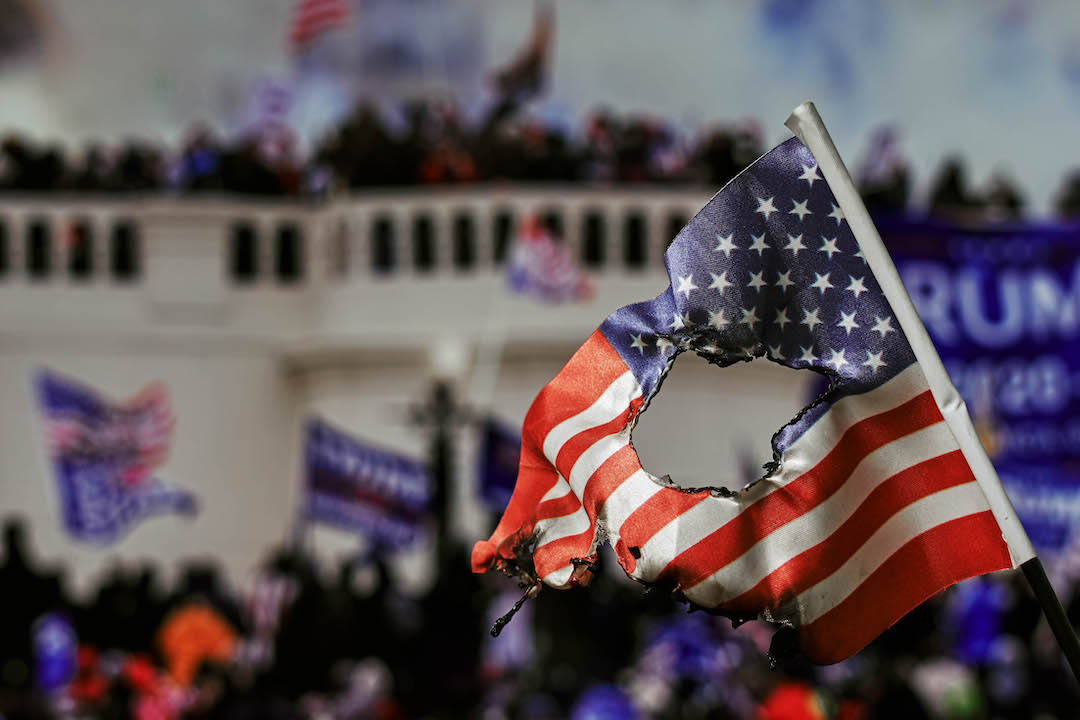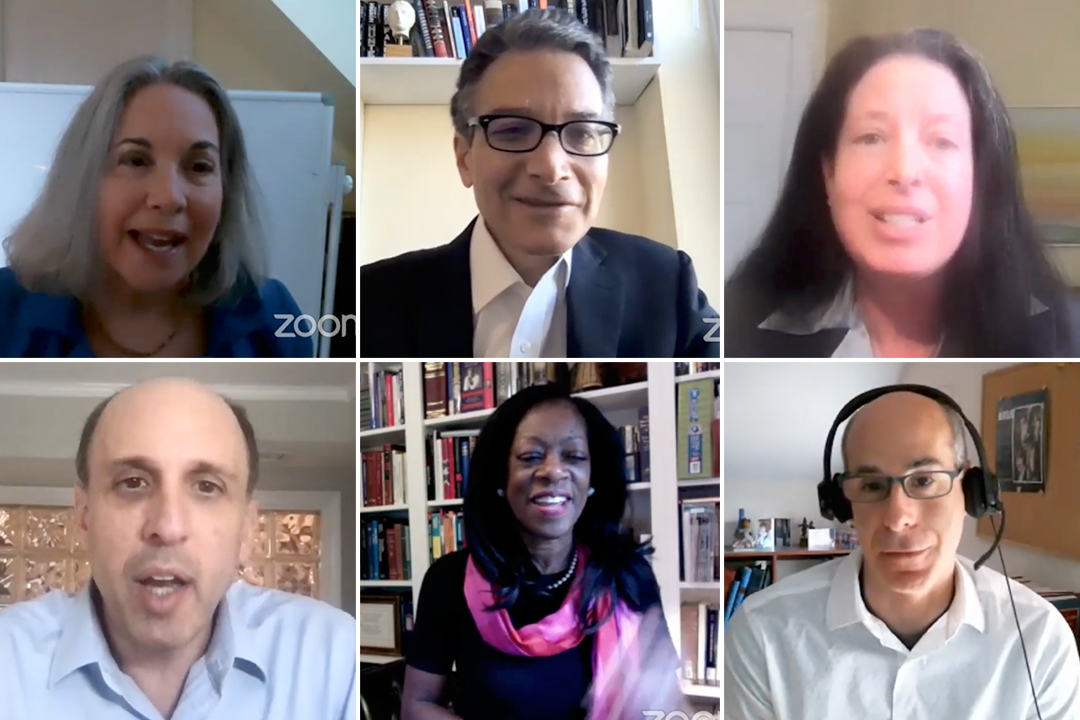By Nick Erickson
Four national journalists reporting on the aftermath of the Jan. 6 insurrection see covering the follow-up investigations and federal cases against individuals involved in the Capitol siege as a vehicle to recognizing the deeper problems with the rise of domestic extremism and misinformation.
Going down that road, they said, hopefully will lead to a better understanding why individuals from all around the country congregated to D.C. two weeks prior to Inauguration Day.
The New York Times’ Alan Feuer, CNN’s Katelyn Polantz, the Huffington Post’s Ryan J. Reilly and BuzzFeed’s Zoe Tillman joined George Washington University’s Program on Extremism Deputy Director Seamus Hughes Tuesday morning for a virtual discussion offering their reflections, insights and latest news from their last nine months of coverage.
While all four journalists have been busy scouring court documents and proceedings with the arrests and investigations, they believe there’s just as much value finding the motivations behind the thousands of people who ransacked the Capitol to disrupt the electoral vote of what they were led to believe was a fraudulent presidential election pushed by unsubstantiated conspiracy theories.
“I think what is unique about Jan. 6 is that it starts with unprecedented attack on the democratic process itself,” Mr. Feuer said. “It honed in on a pillar of how our democracy functions, and for that reason it deserves special attention.”
Mr. Hughes, who moderated the panel, said the four members from the press were invited to speak to the GW community because he believes the public leans on the media to help put into context what, why and how events of that day unfolded.
As the cases continue to mount—there are 636 of them as of Tuesday afternoon according to the Program on Extremism’s dashboard—media outlets are making decisions on how to proceed with the reporting. Ms. Tillman, who works for a smaller newsroom at BuzzFeed, sees the coverage under two umbrellas—the justice side and the human element.
The journalists all agreed that Jan. 6 was a mass radicalization event of people largely disconnected from each other all consuming the same conspiracies and misinformation while receiving the same instructions on where to go and what to do. That differs from thinking about and covering extremist groups in a more traditional way because some of the most violent offenders on Jan. 6 were among the most ordinary, Mr. Feuer said. “They were church deacons,” he said. “They were your neighbors. That touches on toxins in our information ecosystem and broader political and social problems.”
Putting names and faces to this movement has been important for coverage, because those stories offer an entry way into the Jan. 6 conversation. For example, law enforcement has caught two suspects thanks to a match on the dating app Bumble.
While there’s merit in reporting on the people behind the purge, there’s also a fine line to walk as the legal proceedings from that day ramp up.
“I think the real challenge for journalists is not making the story just into these caricatures of people,” Ms. Polantz said. “The Bumble guy is charged with a crime. This isn’t just an urban legend. We do need to understand the court side.”
The journalists said that even though events of that day were well documented, the polarizing political discourse and theories have infiltrated the courtrooms. Ms. Polantz said that defense attorneys are using some of the rhetoric that led to this tense moment in history, making evidence that would seem to be unarguable argued.
While some individuals caught that day have been cooperative with federal prosecutors, others don’t understand what they are being held accountable for, Mr. Reilly said. That has made it harder on courts since some of the participants truly don’t believe they are guilty of any wrongdoings.
“If you actually believe that this was a massive crime, a crime of the century and that America is being stolen from you and this was 1776, I mean, this is a logical response to that actual belief,” Mr. Reilly said. “Now they’re upset that they have some sort of consequences.”
Even with those complications, some evidence is just too overwhelming, especially since many who participated were either caught on camera with their faces exposed or had social media posts pushing conspiracy theories and supporting their violent actions.
As the proceedings continue, the journalists are curious to see how the federal court’s nuances play out. A public, open-source intelligence community has made it easier for the FBI to identify individuals. Those tips have complimented technologies such as face recognition, which the courts have worked to better after a few early missteps.
But because of the sheer volume of cases, the journalists say that government resources are stretched thin, and that technicalities of evidence or discovery could trip up the prosecution. The overwhelming number has also made it difficult to upgrade a case they later find that would warrant more than a misdemeanor.
So far, though, the journalists have been surprised to see the judicial system work as well as it has given the stresses put on it. They will know a lot more in the coming months and years as these cases begin going to trial.
What is clear is that members of the press will continue pursuing the story because of its magnitude. Jan. 6 has come and gone, and tourists have long since returned to taking selfies on those same Capitol steps that sprung chaos never seen before. The implications, however, linger not just in D.C., but in the entire country that was founded on democratic principles.
“It's not a story we're going to let go of, just like we haven't let go of the movement around racial justice that came out of what we saw last summer. It just evolves,” Ms. Tillman said. “How do we continue to cover it? In a way that is accurate and responsible and that tells people something that they may not already know, or that we think is important for them to know to understand the world around them.”




